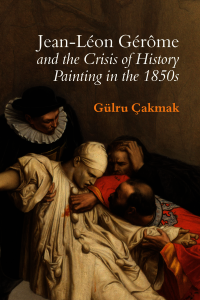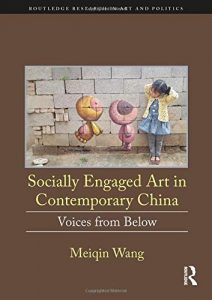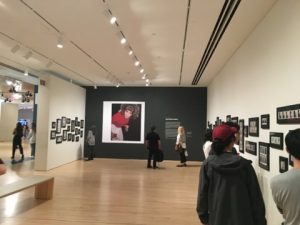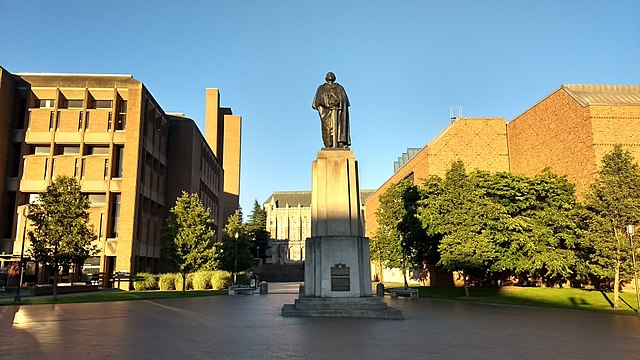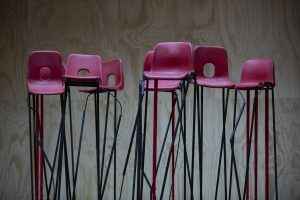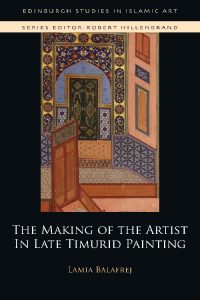CAA News Today
CAA-Getty International Program at CAA 2020
posted Mar 17, 2020
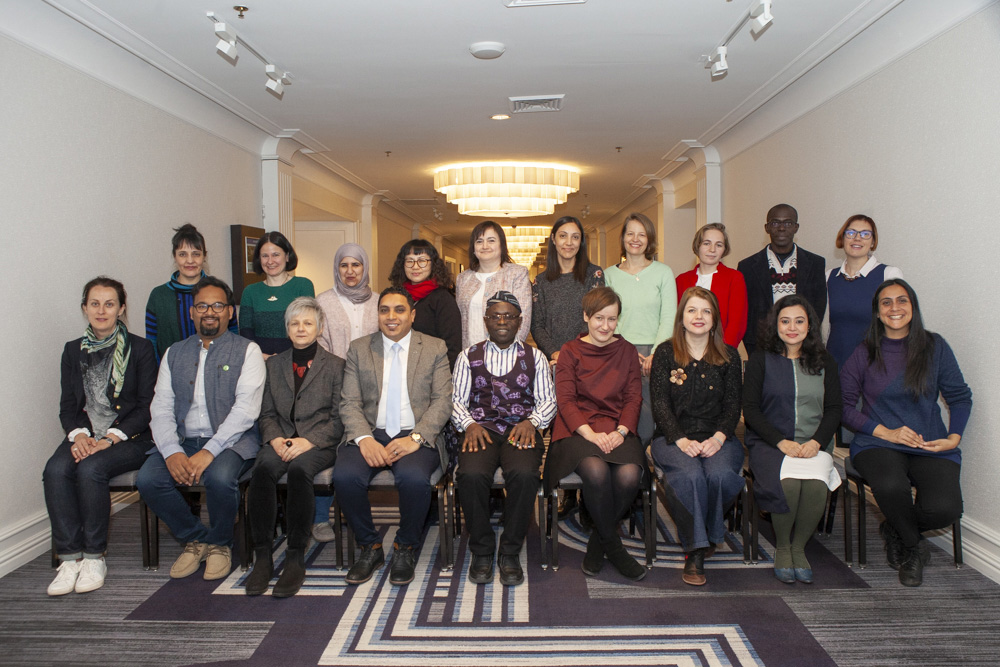
2020 CAA-Getty International Program Participants, photo by Stacey Rupolo.
Front row, left-right: Julia Waite (New Zealand), Saurabh Tewari (India), Daria Jaremtchuk (Brazil), Ali Mahfouz (Egypt), Akande Abiodun (Nigeria), Aleksandra Paradowska (Poland), Iro Katsaridou (Greece), Priya Maholay-Jaradi (Singapore), Giuliana Vidarte (Peru); Back row, left-right: Valeria PazMoscoso (Bolivia), Nora Veszpremi (Hungary/UK), Eiman Elgibreen (Saudi Arabia), Pedith Chan (Hong Kong), Mariana Levytska (Ukraine), Daniela Lucena (Argentina), Katarzyna Cytlak (Poland), Daria Panaiotti (Russia), Jean-Arsène Yao (Côte d’Ivoire), Irene Bronner (South Africa); Not pictured: Ganiyu Jimoh (Nigeria)
One for the Scrapbook! The 2020 CAA-Getty International Program participants—twenty scholars from nineteen countries—arrived in Chicago on the Sunday before the conference to get ready for a busy week of meetings, sessions, and one-on-one conversations. With this year’s participants, the program now includes 135 scholars from 48 countries, adding for the first time representatives from Bolivia, Singapore, and Côte d’Ivoire.
The preconference colloquium on February 11 was held at the School of the Art Institute of Chicago and featured papers on indigenous artists and contemporary art, the politics of cultural heritage, new subjects for art history, artistic exiles, and critical pedagogies.
Eleven US-based CAA members served as hosts for the international visitors, introducing them to scholars in their fields, taking them to Chicago-area museums, and attending their preconference colloquium.
Toward the end of the week, five alumni added their voices to the annual Global Conversation session, this year addressing Art History and the Politics of Vision.
As Julia Waite, from New Zealand, summarized the week: “Attending the CAA conference was hugely stimulating, and I left feeling excited about the future of art history. It reminded me of the strengths of deep art historical research in providing a more complex and nuanced understanding of art and society.”
Coronavirus-Related CAA Office Closure
posted Mar 16, 2020
The recent outbreak of coronavirus (COVID-19) has forced us to make major changes to lives. It has hit our members hard, with the movement of classes online for the remainder of the semester, the closure of major museums, and the cancellation of exhibitions, art fairs, conferences, and meetings. Over the last ten days, we have been posting resources on our twitter feed and on CAA News to help those affected by this health crisis.
RESOURCES FOR CORONAVIRUS-AFFECTED ARTISTS AND FACULTY
For the health and well-being of our staff, we have moved to working remotely. That means that our offices in New York City are closed until further notice.
If you have questions about your membership, please email us at membership@collegeart.org, as we will be checking our voicemails infrequently. Please be patient with your request as we navigate this new way of working under extraordinary circumstances.
Above all, please remain safe and healthy!
New in caa.reviews
posted Mar 13, 2020
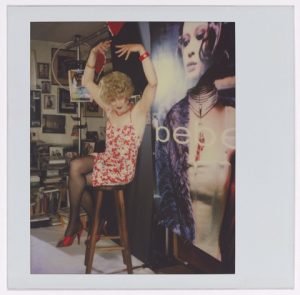 Nina Lubbren discusses Jean-Léon Gérôme and the Crisis of History Painting in the 1850s by Gülru Çakmak. Read the full review at caa.reviews.
Nina Lubbren discusses Jean-Léon Gérôme and the Crisis of History Painting in the 1850s by Gülru Çakmak. Read the full review at caa.reviews.
Yanhua Zhou writes about Meiqin Wang’s Socially Engaged Art in Contemporary China: Voices from Below. Read the full review at caa.reviews.
Ron E. Reichman reviews the SFMOMA exhibition and catalog April Dawn Alison. Read the full review at caa.reviews.
CAA Statement on Firing of Graduate Student Strikers at UC Santa Cruz
posted Mar 12, 2020

UCSC graduate students on strike, March 2020. Photo: Mat Weir, via GoodTimes
The CAA Advocacy Committee approved the following statement in March 2020.
CAA condemns the termination of employment for graduate student strikers at the University of California, Santa Cruz, calls for their reinstatement, and urges the university to commence negotiations with the students as soon as possible. This action has affected graduate students in the visual arts, which will impact their lives in serious ways, including the loss of medical insurance and residency status. We consider that their demands for an appropriate augmentation of salary in line with the increased costs of living are legitimate and note that they now have the support of the UAW, with whom the university is contracted.
Graduate students are indispensable workers who cannot be expected to execute their teaching duties and to pursue their own research when housing and food costs are not affordable with their current wages. CAA maintains that graduate students should be compensated at a level that makes it possible for them to flourish on campus as research assistants, teachers, and emerging scholars. A fair wage correlated with cost of living increases is a necessary precondition for their own work, essential to fulfilling the educational mandate of their departments, and essential for the dignity of all workers at the university. To punish students for exercising their rights to demand a decent wage is, in our view, unjust and unacceptable, and all penalties should be reversed immediately.
Further Reading
UC Graduate Students Threaten More Strikes as Movement Grows (Los Angeles Times)
Why We’re Striking for Fair Teaching Wages at UC Santa Cruz — Even With a Baby on the Way (Washington Post)
California University Fired 54 Grad Students Who Were Striking for Higher Pay (CNN)
Why Graduate Students at UC Santa Cruz Are Striking (New York Times)
CAA Standards and Guidelines for Part-Time Professional Employment (CAA)
CWA Picks for March 2020
posted Mar 12, 2020
CAA’s Committee on Women in the Arts selects the best in feminist art and scholarship to share with CAA members on a monthly basis. See the picks for March below.
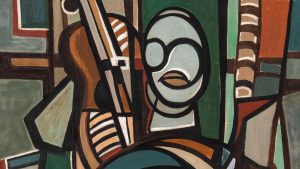
Lygia Clark, The Violoncellist (O Violoncelista), 1951
Oil on canvas, 105.5 x 81 cm
Private Collection
© Courtesy of “The World of Lygia Clark” Cultural Association
Lygia Clark: Painting as an Experimental Field, 1948–1958
Guggenheim Bilbao
March 6 – May 24, 2020
This important exhibition examines the formative investigations of Lygia Clark (b. 1920, Belo Horizonte–d. 1988, Rio de Janeiro), the pioneering Brazilian artist and founding member of the avant-garde Grupo Frente in Rio de Janeiro, and places significant chronological emphasis on her primary transition from figuration to abstraction and major series of geometric and concrete abstractions between 1948-1958. The exhibition traces the artist’s evolution in three organized sections: “The Early Years, 1948-1952”; “Geometric Abstraction, 1953-56”; and “Variation of Form: Modulating Space, 1957-58”. In 1956, Clark delivered a keynote lecture and spoke of painting as an “experimental field.” In her early experiments, she liberated the painting’s frame and explored space as an “organic and spatial line.” Clark envisioned spatial divisions as elastic and indeterminate and reinvigorated the pure grid of Neo-Plasticism through bodily and “vital” surfaces, a process of restructuring the plane of the canvas as a locus of exchange with the viewer. While much scholarly attention has been granted to her later therapeutic practices, Painting as an Experimental Field traces her formal painterly principles and early constructivist influences, ideas that will develop and mature in her profound contribution to Brazilian Neo-Concretism.
Gendering Protest: Deborah Castillo and Érika Ordosgoitti
Mary H. Dana Women Artists Series Galleries, Rutgers University – Mabel Smith Douglass Library,New Brunswick, New Jersey
January 21 – April 3, 2020
The exhibition features the work of two exiled Venezuelan artists, Deborah Castillo and Érika Ordosgoitti, who respond to the increasingly repressive government of Venezuela and question the rising nationalism, economic inequality, and worsening social problems. It is part of the Mary H. Dana Women Artists Series and hosted by the Mabel Smith Douglass Library, the oldest continuous running exhibition space in the United States showcasing the work of emerging and established contemporary women artists. Castillo’s and Ordosgoitti’s artistic practice could be described as performance of protest. The female body featured in their work is imbued with agency and is able to effect social change. Their performative acts of disobedience and feminist social protests activate the body to challenge Venezuelan political regime and the country’s heteronormative patriarchal culture and canonical aesthetics.
News from the Art and Academic Worlds
posted Mar 11, 2020

Image via Twitter, @payusmoreucsc
UC Graduate Students Threaten More Strikes as Movement Grows
Students and faculty members across University of California campuses took action last week in support of UC Santa Cruz graduate students demanding cost-of-living adjustments. (Los Angeles Times)
Online Resource: Women in World History
In honor of International Women’s Day and Women’s History Month, explore an online resource of educational materials for teaching the history of women in the world. (NEH)
Griselda Pollock Becomes First Art Historian to Win Esteemed $646,000 Holberg Prize
The feminist art historian has won one of the world’s biggest awards for contributions to the humanities. (ARTnews)
Want articles like these in your inbox? Sign up for our weekly newsletter:
Affiliated Society News for March 2020
posted Mar 10, 2020
Affiliated Society News shares the new and exciting things CAA’s affiliated organizations are working on including activities, awards, publications, conferences, and exhibitions.
Interested in becoming an Affiliated Society? Learn more here.
Association of Print Scholars
Mari Carmen Ramírez, Wortham Curator of Latin American Art & Director of the International Center for the Arts of the Americas at the Museum of Fine Arts, Houston, delivered the Fifth Annual APS Distinguished Scholar Lecture in New York City on January 24, 2020. Her lecture, “Marks, Materials, and Matrices: Experimental Printmaking and Drawing Practices in Latin America,” is now online at our event archive.
At the 2020 CAA Annual Conference in Chicago, APS sponsored the panel, “Registering the Matrix: Printing Matrices as Sites of Artistic Mediation.” Organized by Jun Nakamura of the University of Michigan, the panel featured four presentations: Jesse Feiman’s paper on “The Triumphal Arch of Maximilian I,”; Laurel Garber on artistic interventions and inventions on printing matrices in nineteenth-century France; Elissa Watters on Manet’s etching “The Absinthe Drinker,”; and Rachel Vogel on conceptual printmaking at NSCAD.
APS is now accepting applications for the APS Publication Grant, which supports the publication of innovative scholarly research about printmaking across all time periods and geographic regions. The grant carries a maximum award of $2,000 and is funded through the Association of Print Scholars and the generosity of C.G. Boerner and Harris Schrank. Applications are due August 31, 2020 and further details can be found here.
AMCA (Association for Modern and Contemporary Art of the Arab World, Iran, and Turkey)
2020 Rhonda A. Saad Prize for Best Paper in Modern and Contemporary Arab Art
The 2020 Rhonda A. Saad Prize for Best Paper in Modern and Contemporary Arab Art was awarded to Maryam Athari for her paper “Diagnostic Revelation: Rifat Chadirji’s Street Photography.” Maryam is a PhD Candidate in Art History at Northwestern University. The Rhonda A. Saad Prize review committee found that Maryam’s paper ““Diagnostic Revelation” offers an insightful account of Rifat Chadirji’s entwined photographic and architectural practices that is theoretically, historically, and formally grounded. Connecting Chadirji’s photographs to contemporary image practices by Iraqi and European-trained architects, her paper carefully articulates that these photographs “investigate challenges faced by architectural modernism in Iraq and its relation to everyday people.”
Established in 2010 in honor of our dear and respected colleague and friend, The Rhonda A. Saad Prize aims to recognize and promote excellence in the field of modern and contemporary Arab art. The award is offered to a graduate student or recent post-doctoral scholar working in any discipline whose paper is judged to provide the most significant contribution to the disciplines of Art History and Middle East Studies. For more information, submission guidelines, and interviews with previous winners, please visit www.amcainternational.org.
AMCA, in collaboration with the University of North Texas, receives grant from the Getty Foundation
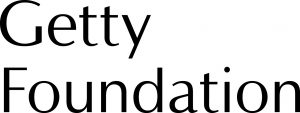
This project is made possible with support from the Getty Foundation through its Connecting Art Histories initiative.
AMCA is happy to announce receiving funding from the Getty Foundation, as part of its Connecting Art Histories initiative, to support “Mapping Art Histories in the Arab World, Iran and Turkey.” The project team, led by Nada Shabout, Sarah Rogers, Pamela Karimi, Jessica Gerschultz, Anneka Lenssen, Sarah-Neel Smith, Dina Ramadan, and Tiffany Floyd, will undertake extensive research on courses, programs, and alternative educational platforms and initiatives in the fields of art history, architectural studies, and archaeology throughout the region. With increasing interest in the modern and contemporary arts of the Arab world, Iran, and Turkey, the need for the field’s historiography has become vital. A publication and interactive map are planned.
Society of Architectural Historians
 The Society of Architectural Historians has launched three surveys to collect information from academics for its two-year study on the status of the field of architectural history in higher education in the United States, the SAH Data Project. The surveys are intended for chairs and administrators, faculty, and students and represent the most public phase of the project’s data collection to date. The aim of the SAH Data Project is to determine where and in what ways the field of architectural history is expanding, receding, or holding steady, and to consider the structural or cultural factors behind such trends.
The Society of Architectural Historians has launched three surveys to collect information from academics for its two-year study on the status of the field of architectural history in higher education in the United States, the SAH Data Project. The surveys are intended for chairs and administrators, faculty, and students and represent the most public phase of the project’s data collection to date. The aim of the SAH Data Project is to determine where and in what ways the field of architectural history is expanding, receding, or holding steady, and to consider the structural or cultural factors behind such trends.
The SAH Data Project team is using these surveys to gather some of the necessary quantitative data such as course enrollments over time, tenure-stream versus contingent faculty, faculty and student demographics. The surveys also collect crucial qualitative data about aspects of the field that may have long-lasting impacts, such as the effect of the 2008 economic downturn on architectural history programs and the extent to which students have demonstrated interest in themes related to social justice or the climate crisis.
The three surveys for academics will remain open through May 15, 2020. SAH will invite architectural historians working outside the academy to share their perspectives and contribute to the project later this spring. This includes architectural historians employed by government agencies, nonprofit organizations, museums, design education organizations, preservation organizations and architectural publications, to name a few.
In addition to online surveying, the project methodology also encompasses a variety of other kinds of quantitative and qualitative data-gathering tasks such as conducting in-depth group conversations with project constituents and analyzing existing publication lists for thematic trends over time.
More information and links to the surveys are available at sah.org/data-project.
The Renaissance Society of America
RSA 2020 Philadelphia
More than 2,200 scholars from across the country and the globe will be coming to Philadelphia in April for the largest international conference devoted to the study of the era 1300–1700. Join the Renaissance Society of America for one or for several of the more than 570 sessions taking place April 2–4, 2020. Sessions include:
“New Perspectives on Italian Art” – click here for details
“Reconsidering Raphael” – click here for details
Roundtable: “The Global Turn in Art History: Where Next” – click here for details
“Computer Vision and the Period Eye: Methodological Challenges for Computing Art” – click here for details
“Expanding the Canon: New Research of Artemisia, Marietta Tintoretto, Sofanisba, and Lavinia Fontana” – click here for details
“Placemaking and the Domestic Interior in Early Modern Europe” – click here for details
You can view the full program here.
Day passes are available. You can order a day pass here to reserve a spot at the conference.
Attendees will be coming to RSA 2020 Philadelphia from Europe, Asia, Africa, South America, and across Canada and the United States—and we hope you will join us too. Please email rsa@rsa.org with any questions.
Visual Resources Association News
The next VRA international conference for image media professionals will take place at the Royal Sonesta Harbor Court Hotel in Baltimore from March 24-27, 2019. We welcome CAA members as well as any intensive image users and like-minded information professionals to join in on what is an exciting schedule of workshops, sessions, meetings, tours, and social events in Maryland.
The Visual Resources Association is a multidisciplinary organization dedicated to furthering research and education in the field of image management within the educational, cultural heritage, and commercial environments that has been affiliated with CAA for many years (http://vraweb.org/).
In addition, the VRA Foundation (VRAF) continues to sponsor the Summer Educational Institute for Digital Stewardship of Visual Information (SEI), which is a joint project with the Art Libraries Society of North America (ARLIS/NA). This year it will take place from June 23-26 at Northwestern University in Evanston, IL. Beginning with the first institute held at Duke University in 2004, the goals for SEI have remained constant; to provide information professionals with a substantive educational and professional development opportunity focused on digital imaging, the information and experience needed to stay current in a rapidly changing field, and the opportunity to create a network of supportive colleagues. Nearly 400 visual resources professionals, librarians, museum professionals, graduate students, and individuals from an ever-widening number of fields have attended SEI and we welcome CAA members. For more information, see https://vrafoundation.org/summer-educational-institute/ and if you have any additional questions, please contact SEI Co-Chairs Courtney Baron or Bridget Madden.
For more information about the important work and professional development activities sponsored by the Visual Resources Association or the VRA Foundation, please contact Maureen Burns, VRA’s CAA Affiliate Representative at moaburns@gmail.com or 310-489-3792.
Historians of German, Scandinavian, and Central European Art & Architecture (HGSCEA)
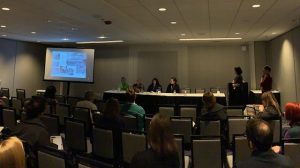 As always, the annual conference was a busy and exciting time for HGSCEA.
As always, the annual conference was a busy and exciting time for HGSCEA.
Jordan Troeller and Hyewon Yoon chaired HGSCEA’s sponsored session, “A Foreign Eye: Photography, Women, and Global Encounters in the Twentieth Century,” which was very well attended, It offered excellent papers by Kim Felt, Alyssa Bralower, Kim Sichel, and Elisaveta Dvorakk on the complex and often fraught positions occupied by German, Swiss, and French women who worked as photographers in Japan, Palestine, Africa, and Afghanistan from the 1920s to the 1940s.
Directly after the session, newly elected members of the Board – Nina Amstutz (at large), Jenny Anger (Secretary), Thor Mednick (at large), and Nick Sawicki (at large) – met with continuing and outgoing members at the annual business meeting to discuss officers’ reports and proposals for the 2021 sponsored session. Morgan Ridler (Web Manager), Jeffrey Saletnik (at large), Adrian Sudhalter (Treasurer), and James van Dyke (President) will continue on the Board, while Kathleen Chapman, Karla Huebner, Juliet Koss, and Marsha Morton are moving on.
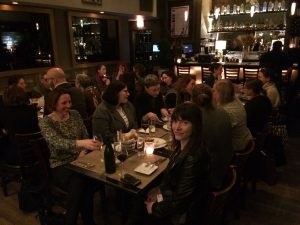
About thirty members gathered at Bistronomic for the annual members’ dinner. There, the results of the 2019 Emerging Scholars Publication Prize were announced. Honorable mentions went to Hannah Shaw for “The Trouble with the Censorship of August Sander’s Antlitz der Zeit” (PhotoResearcher) and to Kristin Schroeder for “A New Objectivity: Fashionable Surfaces in Lotte Laserstein’s New Woman Pictures” (The Art Bulletin). The winner was Aaron Hyman’s “The Habsburg Re-Making of the East at Schloss Schönbrunn, ‘or Things Equally Absurd’” (The Art Bulletin).
Finally, several members gathered at the Art Institute for a special HGSCEA event organized by Jay Clarke, Curator in the Department of Prints and Drawings. They had the opportunity to look closely at a large selection of works on paper ranging from Dürer and Hollar, through Kollwitz and Munch, to Kiefer and Trockel.
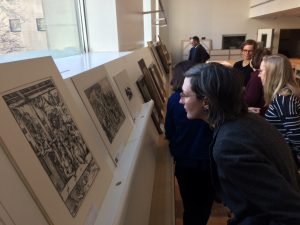
Public Art Dialogue (PAD)
Public Art Dialogue (PAD) is now accepting nominations for the 2021 PAD Award for achievement in public art. Past recipients include Michael Rakowitz, fierce pussy, and Judy Baca. Deadline is March 20, 2020. PAD is also soliciting submissions for its session during the 109th CAA Conference in New York. Abstracts of no more than 250 words are due April 1, 2020. Membership in Public Art Dialogue is required for all nominations and submissions, which may be sent to publicartdialogue@gmail.com. To join PAD, visit http://www.publicartdialogue.org/join.
Women’s Caucus for Art
Women’s Caucus for Art: Celebrating Achievements
The Women’s Caucus for Art hosted their annual conference concurrently with College Art Association national conference in Chicago, February 12-16, 2020. Under the conference theme of “Intersectionality,” WCA found many ways to celebrate the achievements of its members. WCA members exhibited work in two shows in Chicago during the conference – the national juried exhibition, Collectively Shifting, at Bridgeport Arts Center, and the Young Women’s Caucus exhibition, Intersectional History, at Woman Made Gallery. The Northern California chapter of WCA hosted an excellent panel discussion on “Amplifying Inclusion: Intersectional Feminism in Contemporary Curatorial Practice,” focused specifically on their F213 exhibition. WCA/CAA Liaison Rachel Epp Buller, along with SCWCA past president Niku Kashef, participated in several events celebrating the new co-edited book, Inappropriate Bodies: Art, Design, and Maternity. And the celebratory capstone event of the conference was the Lifetime Achievement Awards, presented in 2020 to Joyce Fernandes, Michiko Itatani, Judy Onofrio, Alison Saar, and Judith Stein, along with the President’s Awardee for Art and Activism, Rose Simpson.
SECAC
SECAC 2020 – Richmond,Virginia
Virginia Commonwealth University School of the Arts is honored to host the 76th annual meeting of SECAC in Richmond, VA from October 21-24, 2020. As its theme, the conference will engage the concept of commonwealth as an ideal of common good that pervades the political landscape of arts and educational institutions. We will question the complexities of a commonwealth, both in its original utopian form and its attendant failings as a colonial structure. With its rich history and diverse arts community, the city of Richmond will serve as an excellent setting to explore the 2020 conference theme through panel and round-table sessions, special events and exhibitions, and countless opportunities for individual exploration. We are planning for over 130 individual sessions at the 2020 conference, all to take place at the conference hotel, the Richmond Marriott Downtown (500 East Broad Street). Additionally, we have planned exciting programming for conference participants, including:
- Keynote lecture by Valerie Cassel Oliver, Curator of Modern and Contemporary Art at the Virginia Museum of Fine Arts
- Juried Members’ Exhibition at The Anderson (VCUarts campus), with prizes awarded by guest juror, Dr. Sarah Eckhardt, Associate Curator of Modern and Contemporary Art at the Virginia Museum of Fine Arts
- 2019 SECAC Artist’s Fellowship Exhibition at the VCUarts Fine Arts Building gallery, and opportunity for open studio visits
- Excursions to the Virginia Museum of Fine Arts, VCU’s Institute of Contemporary Art, and the Hartnett Museum of Art at the University of Richmond
Call for Papers: February 10 – April 1, 2020
Juried Exhibition Entries: February 18 – April 15, 2020
Early conference registration will open on August 4, 2020. Visit https://secacart.org/page/Richmond for registration rates and additional conference-related information.
Contact: secac2020@vcu.edu
Historians of Netherlandish Art
ARIAH (Association of Research Institutes in Art History) has awarded funds to the Journal of Historians of Netherlandish Art (jhna.org) for the development of hotspots in images for the lead article in the Summer 2019 issue (JHNA v. 11:2). This is E. Melanie Gifford’s “The Fall of Phaeton in the Evolution of Peter Paul Rubens.” Jennifer Henel will become the digital art history developer of the hotspots, along with Morgan Schwartz. The Summer 2019 issue was funded by the Samuel H. Kress Foundation.
HNA is soliciting proposals for a session topic for CAA 2021 in New York, which will be held February 10-13th at the Hilton. Our deadline for proposals will be Tuesday, April 14th, with a decision to be made shortly thereafter. Session proposals for HNA sponsorship should appeal broadly to our membership, and should focus primarily (but not necessarily exclusively) on art and architecture of the Netherlands from approximately 1350 to 1750. Chair(s) should be members of the HNA, and all speakers eventually selected are encouraged to be members as well. Session proposals should include a title and summary of the topic (a maximum of 400 words), and cv of the chair(s). Please submit your proposal to Louisa Wood Ruby, HNA Vice President, by April 14th via email: woodruby@frick.org.
Association for Textual Scholarship of Art History (ATSAH)
ATSAH Recent Publications
Andrzej Piotrowski, Professor, University of Minnesota, School of Architecture
The Routledge Handbook on the Reception of Classical Architecture, eds. Nicholas Temple, Andrzej Piotrowski, Juan Heredia (Abingdon & New York: Routledge, 2020).
Lindsay Alberts, Independent Scholar
Art Inquiries, Vol. 17, Number 4 (2019), covering Yale University Art Gallery’s exhibition “Leonardo: Discoveries in Verrocchio’s Workshop”
Sandra Cheng, Associate Professor of Art History, New York City College of Technolgy, CUNY
Sandra Cheng, “Ridiculous Portraits: Comic Ugliness and Early Modern Caricature” in Rire en images à la Renaissance, ed. by Francesca Alberti and Diane Bodart, 117-126. Turnhout: Brepols, 2018.
Eliana Carrara, Associate Professor of Art History, Università di Genova, Italy
- CARRARA E. (2019), Fonti storico-artistiche prevasariane sulla ‘Sala grande’, in ITALIANISTICA, XLVIII/1, 2019, pp. 107-123;
- CARRARA E. (2019), Il tema del Paragone delle Arti da Leonardo a Benedetto Varchi, in Nodi, vincoli e groppi leonardeschi. Études sur Léonard de Vinci. Sous la direction de Frédérique Dubard de Gaillarbois & Olivier Chiquet, Paris, Spartacus-idh, 2019, pp. 241-256;
- CARRARA E. (2019), Biografi e biografie di Leonardo fra Rinascimento e prima età moderna (XVI-XVIII secolo), in Leonardo da Vinci. Disegnare il future, catalogo della mostra a cura di Enrica Pagella, Francesco Paolo di Teodoro, Paola Salvi, Cinisello Balsamo (MI), Silvana Editoriale, 2019, pp. 157-181;
- CARRARA E. (2019), La correspondance de Giorgio Vasari: un exemplum du nouveau statut de l’«artefice», à la croisée de l’art et de la littérature, In Relier, délier les langues Formes et dés linguistiques de l’écriture épistolaire (Moyen Âge – première modernité), éds. C. Panzera et alii, Paris, Editions Hermann, 2019, pp. 179-204;
Lynette M.F. Bosch, Professor of Art History and Distinguished Professor at SUNY, Geneseo
2020 – Mannerism, Spirituality and Cognition: The Art of Enargeia, Routledge Press
2019 - Demi, Skira Press.
2019 – “The Cuban-American Exile Vanguardia: Towards a Theory of Collecting Cuban-American Art,” Picturing Cuba: Art, Culture and Identity on the Island and the Diaspora, University of Florida Press.
Liana De Girolami Cheney, President of ATSAH. Professor of Art History (emerita) UMASS Lowell
2020 editor, Readings in Italian Mannerism II: Architecture. Peter Lang
2020, “Lavinia Fontana’s Galatea: Personification of Fortune and Venus”
The Journal of Literature and Art Studies vol. 10. no. 1 (January 2020): 42-59.
- “Giorgio Vasari’s Mercury: God of Magic and Wisdom,” Journal of Cultural and Religious Studies,Vol. 7, No. 10 (October 2019): 511-50.
New in caa.reviews
posted Mar 06, 2020
The three former field editors for theory and historiography—David Carrier, Michael Ann Holly, and Andrei O. Pop—reflect on the state of the field(s) and the place of reviewing in the theoretical life of art history. Read the full discussion at caa.reviews.
Tobias Vogt writes about the 2019 Venice Biennale, May You Live in Interesting Times. Read the full review at caa.reviews.
Esra Akın-Kıvanç discusses The Making of the Artist in Late Timurid Painting by Lamia Balafrej. Read the full review at caa.reviews.
News from the Art and Academic Worlds
posted Mar 04, 2020
The Smithsonian Puts 2.8 Million Images in the Public Domain
The Smithsonian opted for a Creative Commons Zero license, which places work “as completely as possible in the public domain.” (Wired)
Louvre Closes to Public as Staff Meets to Discuss Spread of Coronavirus in France
The institution temporarily closed this week to discuss the spread of the virus. (ARTnews)
Refugee Docents Help Bring A Museum’s Global Collection To Life
Attendance at the Penn Museum has shot up since the Global Guides’ first tours in 2018. (NPR)
Meet the Iowa Architect Documenting Every Slave House Still Standing
Since 2012, Jobie Hill has surveyed hundreds of structures that she believes once served as homes to enslaved African Americans. (Atlas Obscura)
Want articles like these in your inbox? Sign up for our weekly newsletter:



